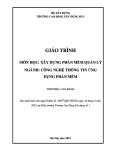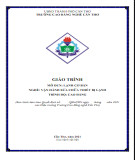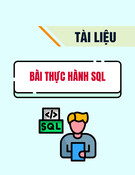
Rapid software development
£Rapid development and delivery is now often the most
important requirement for software systems
pBusinesses operate in a fast – changing requirement and it is
practically impossible to produce a set of stable software
requirements
pSoftware has to evolve quickly to reflect changing business
needs.
£Plan-driven development is essential for some types of
system but does not meet these business needs.
£Agile development methods emerged in the late 1990s
whose aim was to radically reduce the delivery time for
working software systems
4
CuuDuongThanCong.com https://fb.com/tailieudientucntt

Agile development
£Program specification, design and implementation are
inter-leaved
£The system is developed as a series of versions or
increments with stakeholders involved in version
specification and evaluation
£Frequent delivery of new versions for evaluation
£Extensive tool support (e.g. automated testing tools) used
to support development.
£Minimal documentation – focus on working code
5
CuuDuongThanCong.com https://fb.com/tailieudientucntt





























